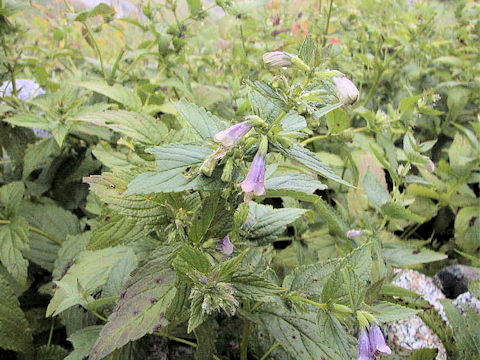
|
The "Misogawa-so" (Nepeta subsessilis) belongs to Lamiaceae (the Mint family). It is a perennial herb that is endemic to Japan and is distributed from Nara prefecture of Honshu north to Hokkaido and in Shikoku. This herb grows along mountain streams and moist grasslands in the mountainous and alpine regions, and can reach 30 to 100 cm in height. The stem has four ridges, and long-ovate leaves are opposite. The pale bluish-purple flowers come on the axils at the top of the stem from July to August. The corolla is labiate, the upper lip bulges like a helmet, the lower lip splits into three, and the central lobe has purple spots. The Japanese name is said to be due to the fact that the herb has a strange odor, or because it is often found in the Miso River that flows through Kiso Village in Nagano Prefecture.
|




